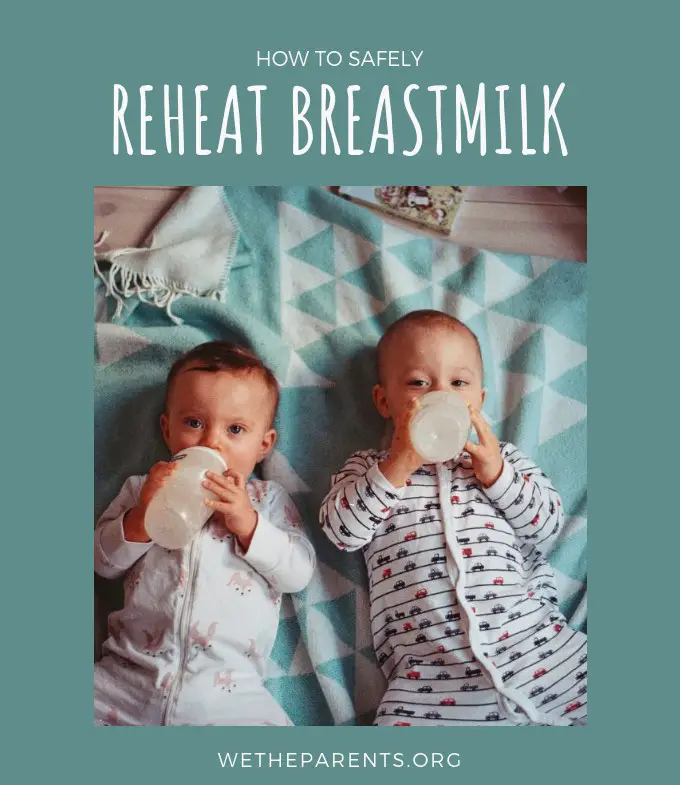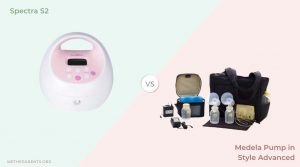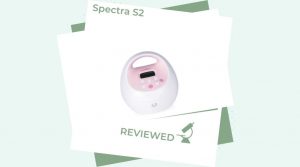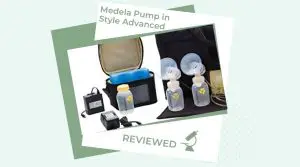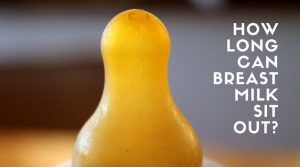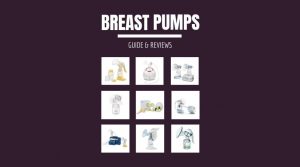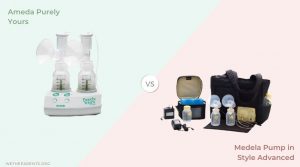There are plenty of reasons why breast milk might need reheating. Maybe you’re heading back to work, and someone else will be feeding your little one. Or, perhaps, dealing with an overproduction issue.
Or, hey… sometimes every mama’s nipples just need a break! Whatever the situation, if you pump and store, the question of reheating breast milk is bound to come up.
It sounds simple in principle, right? But alas, warming up that milk is not as easy as throwing a frozen pizza in the oven. It’s vital to defrost and heat up breast milk correctly, as using the wrong technique can cause your baby’s nutrition and wellbeing to suffer.
So let’s talk about the best ways to reheat breast milk without it becoming a health hazard for your precious baby.

In this article:
Storing your breast milk
Consider safe storage the first step of warming up breast milk. If that seems odd, just remember that you can’t build a sound house on a crumbling foundation.
Proper storage will preserve those ever-essential nutrients and vitamins contained in breast milk, ensuring that your baby’s bottled meals are as healthy as can be. When storing milk:
DO
- Wash your hands thoroughly before expressing and storing milk;
- If using a pump, regularly check all parts for mold or other defects and clean the device after each use;
- Store milk in milk storage bags or food-grade containers with a tightly sealable lid;
- Make sure all storage containers are BPA-free (a recycle symbol that has a 7 in the middle may contain BPA, so avoid these products);
- Fill containers with only as much milk as your baby eats per meal;
- Leave a space of about one inch at the top of the container (breast milk will expand when frozen);
- Label each container with the date on which you expressed the milk
DO NOT
- Store containers in the fridge or freezer door as their temperature can be affected by the opening and closing of said door;
- Use disposable bottle liners or plastic bags for storage;
- Store milk in milk-storage bags or food-grade containers with a tightly sealable lid;
- Add warm milk to your already frozen breast milk. 1Proper Storage and Preparation of Breast Milk
dc.gov/breastfeeding/recommendations/handling_breastmilk.htmInfant and toddler health
mayoclinic.org/healthy-lifestyle/infant-and-toddler-health/in-depth/breast-milk-storage/art-20046350
Expert note:
You can combine milk from multiple pumping sessions into one storage container if needed, just make sure all the milk is the same temperature before you combine it! If it’s from two different days, make sure to label it with the oldest date.
How long does breast milk stay good?
Breast milk does not stay good forever, which is why it’s so important to label everything you store with the date on which it was expressed. Always grab the oldest milk for your baby’s next meal to avoid waste.
If you forget to label a container and are unsure of how long it has been sitting around, then it’s time to take a deep breath, give a respectful salute to that liquid gold, and throw it away. But how long is too long for milk to be living in cold storage?2Proper Storage and Preparation of Breast Milk
cdc.gov/breastfeeding/recommendations/handling_breastmilk.htm
When refrigerated
Milk that you have expressed by hand or with a pump will keep for up to 4 days.
Milk that has already been thawed once will keep for 24 hours.
When frozen
Milk that you have expressed by hand or with a pump should preferably be used within 6 months but can be good for up to 12 months, especially if in a stand-alone deep freezer.
Milk that’s already been thawed once should never be refrozen.
What should the temperature of warmed breast milk be?
While some babies are perfectly happy to drink milk straight from the refrigerator, many little ones much prefer the warm meal.
Now, when we say warm, we do not mean ‘fresh from the oven’ warm. Shoot for a number that’s around your normal body temperature. Since healthy adults have an average body temperature between 97°F (36.1°C) and 99°F (37.2°C), that is the range you want to go for.
Always give reheated milk a gentle swirl before testing it to avoid any deceptive ‘hot spots’ (and to mix in the fat, which may have separated as the milk cooled in storage). Then drizzle a few drops against your wrist and remember, you want it to feel lukewarm, not hot.3What Is the Normal Body Temperature Range?
healthline.com/health/what-is-normal-body-temperatureAustralian Breastfeeding Association. (2011).Expressing and storing breastmilk.nhs.uk
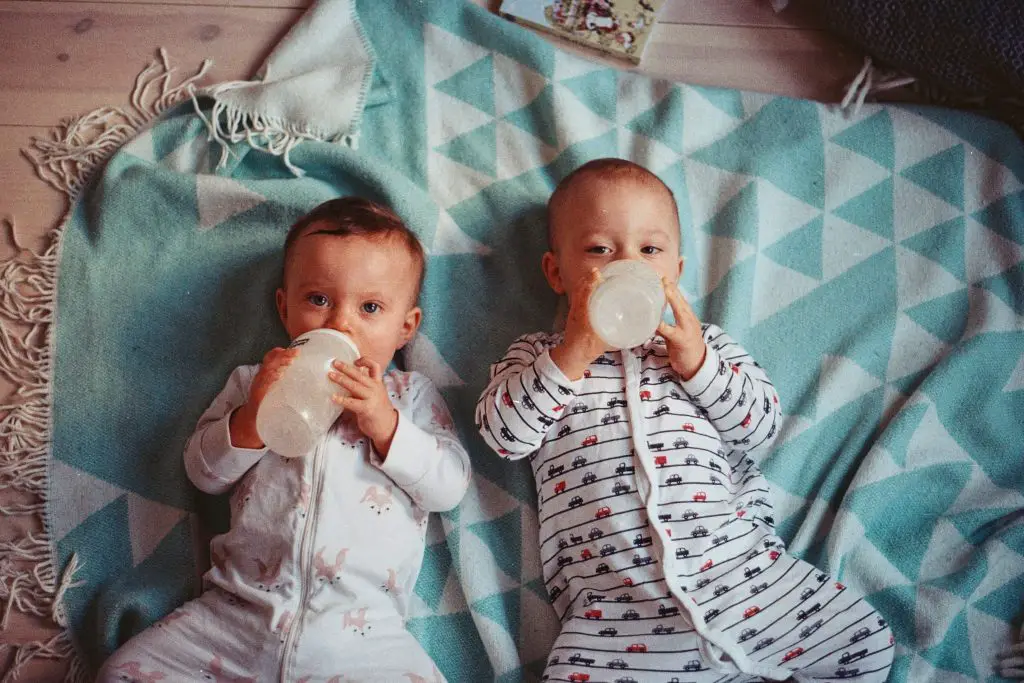
Overheating breastmilk
While we’re talking temperatures, it’s important to note that breast milk can, in fact, be overheated. When breast milk reaches temperatures of 104ºF (40ºC), it begins to lose some of its nutritional integrity, as well as its immunological benefits. By 122ºF (50ºC), these values will continue to decrease at a significant rate.
No one’s perfect, and you’ll probably overheat breast milk at least once in your mommy career. Once the liquid has cooled to an appropriate temperature, you can still feed it to your little one. Don’t make a habit out of it, but don’t feel like you should be tarred and feathered, either!4DBransburg-Zabary, S., Virozub, A., & Mimouni, F. B. (2015).Human milk warming temperatures using a simulation of currently available storage and warming methods. PLoS One, 10(6), e0128806.
ncbi.nlm.nih.gov
CDC.gov
Do I need a bottle warmer?
While a bottle warmer is not necessary to get your breast milk to an ideal temperature, some mothers do find them to be convenient pieces of mama equipment to have around. (You may be interested in the guide we wrote about bottle warmers.)
Be careful not to overheat your breast milk in your bottle warmer. Some products can reach temperatures of 176˚F (80˚C), and you certainly don’t want to give something that hot to your baby.
Aside from the potential for burn injuries, the milk’s nutritional and antibody values will be significantly degraded, as discussed above.5 ransburg-Zabary, S., Virozub, A., & Mimouni, F. B. (2015).Human milk warming temperatures using a simulation of currently available storage and warming methods. PLoS One, 10(6), e0128806.
ncbi.nlm.nih.gov
Reheating refrigerated breast milk
If you are now a little freaked out about warming up your baby’s milk, don’t fret! There are several tried and tested ways to reach that temperature sweet spot, none of them requiring a degree in physics.
1. Run the bottle or storage container under the tap, making sure that the flowing water is warm.
This method can feel a bit inconvenient, as you’re stuck holding the bottle or milk container while the warm H20 does its job. It can also be a bit wasteful, as you’ll need to leave the tap running for several minutes to reach that perfect temperature. But at least it gets the job done.
2. Fix a warm ‘bath’ for the bottle or storage container.
This technique is simple enough; just fill a bowl with enough warm water to submerge the bottle or container. Some mamas prefer this method since there’s no need to stand around holding anything, it wastes less water, and you can use prewarmed water.
3. Use a bottle warmer.
Every product will have its own instructions, so be sure to read the operator’s manual carefully. No matter which method you use, remember always to test the milk’s temperature after giving it a gentle swirl.
Reheating frozen breast milk
Even if your baby is amenable to a cold bottle, they’ll undoubtedly turn their noses up at a bottle of iced milk. Who wouldn’t? Luckily, getting that milk ready for consumption is pretty simple. To thaw frozen breast milk, you can either:
- Leave it in the refrigerator for 24 hours.
- Run the container with the frozen breastmilk under a warm tap for several minutes
- Submerge the container with the frozen breastmilk in warm water.
- Use a bottle warmer, but with caution. Not all bottle warmers will come with a ‘defrost’ setting, and you must be extra careful about not overheating your breastmilk.
On the go
We’re all busy mamas these days. Sometimes all the rushing around in a day means your little one may often be eating out. Luckily, you don’t have to force your baby to drink cold milk just because you’re out and about.
To reheat a bottle on the go, many mothers will simply let it warm up naturally in their diaper bag. If mealtime comes early on any given day, don’t despair; where there’s a will, there’s a way…as long as you have planned ahead a bit.
Store some warmed water in an insulated container, like a large travel mug. You can then either pour the warm water over the bottle or, and this will probably be more effective, place the bottle in the travel mug and let the water do its job.
Dos of breast milk reheating
- Store and label freshly expressed breast milk correctly to maintain optimal nutrition;
- Gently swirl breast milk after heating, as this eliminates the risk of hotspots and also mixes any separated fat back in;
- Test the temperature before giving the bottle to your baby;
- Be patient; it will take several minutes, or longer, for any technique to warm breast milk up to the proper temperature.
Don’ts of breast milk reheating
- Microwave breast milk;
- Reheat breast milk on the stove;
- Overheat breast milk;
- Add new breast milk to frozen breast milk;
- Refreeze thawed breast milk. 6Infant and toddler health mayoclinic.org/healthy-lifestyle/infant-and-toddler-health/in-depth/breast-milk-storage/art-20046350
Expert note:
Since thawed and reheated milk is only good for a few hours, if not sure how hungry your baby is, start with a smaller serving if worried about wasting that precious breastmilk! You can always heat up a few more ounces if needed.
Wrapping up
Preparing your breast milk for reheating begins as soon as it comes out of your breast. Proper storage will protect its nutritional value, while labels ensure that you first use the containers with the oldest milk.
Whether using a good old-fashioned water warming method or a high-tech baby bottle warmer whenever meals are served, remember to swirl and temperature test before nursing your little one.
Believe it or not, it won’t be long before you can reheat breast milk in your sleep. And honestly, if you’re bottle-feeding at night, that’s exactly how it WILL feel!


